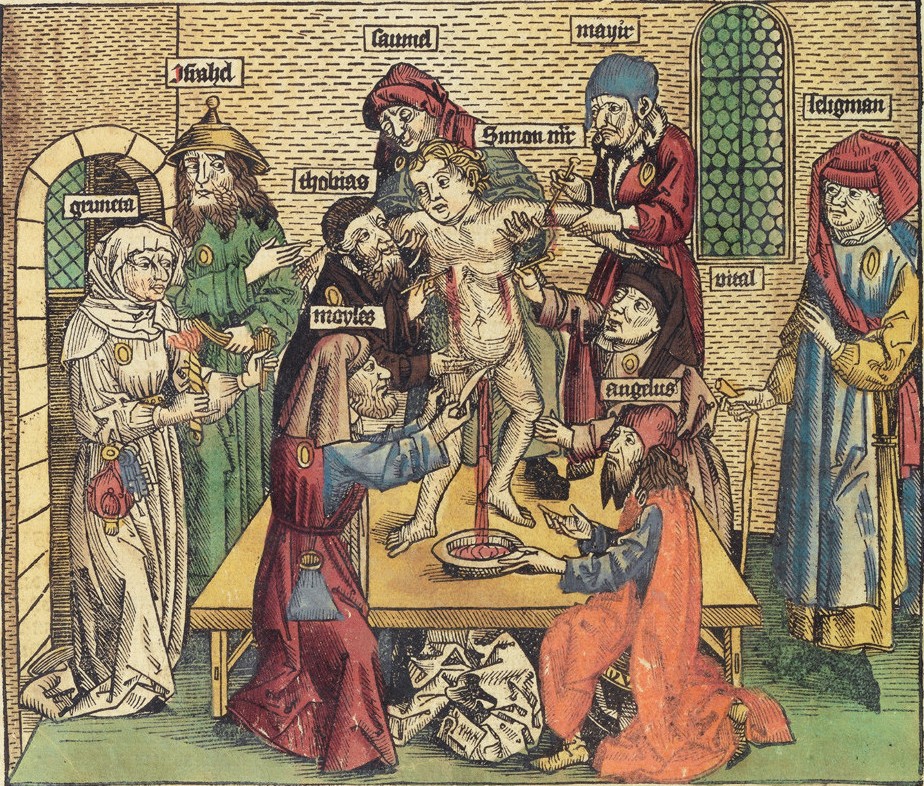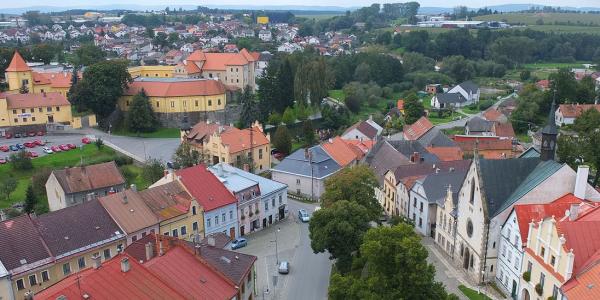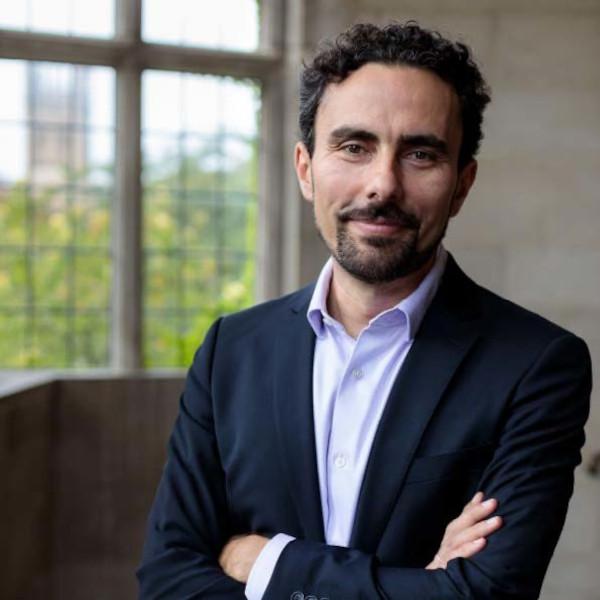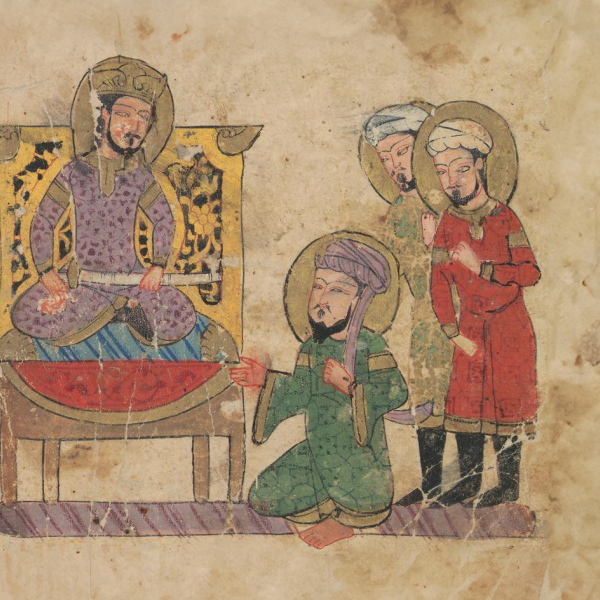Hillel Kieval is the Goldstein Professor of Jewish History and Thought and the chair of the Department of Jewish, Islamic, and Middle Eastern Studies. His book “Blood Inscriptions: Science, Modernity, and Ritual Murder in Europe’s Fin de Siècle” will be published in 2021.
Students of Jewish-Christian relations in the Middle Ages are familiar with what is often called the “blood libel,” the accusation that Jews were in the habit of kidnapping Christian children (typically young boys) to torture and kill them (in imitation of the crucifixion of Jesus), and — according to many, but not all, accounts — to consume the blood of their victims in the performance of Jewish ritual. Classic instances of the ritual murder accusation took place in the 12th and 13th century in England, France and the Holy Roman Empire and often involved mass arrests, interrogations under torture, public trials and executions.

It has not escaped the notice of scholars that peaks in the number of such persecutions coincided with episodes of controversy and disruption within Christian communities — disputes over the doctrine of transubstantiation, for example, or Counter-Reformation politics in early modern Poland. Stories of Jewish ritual murder performed a variety of cultural functions in traditional Christian societies: They transferred narratives of Christ’s suffering and crucifixion from the distant past to the ongoing present; they enunciated the paradoxical closeness and distance, connection and rivalry, between Judaism and Christianity; and they articulated a message of potential and omnipresent danger that attended the coexistence of Jews and Christians.
This peculiar legend has enjoyed great longevity in European popular culture. Its dissemination, down to the 20th century, can be traced from sermons and homilies to intergenerational family communications. But the fact of the matter is that the blood libel never went unchallenged. It was denounced in a famous papal bull in the 13th century, lampooned by Protestant theologians in the 16th century and dismissed as superstition in in the Enlightenment. Reforms in criminal procedure and, especially, the abolition of the use of torture in criminal investigations by the end of the 18th century, seemed to have put a final stop to state support for public prosecutions of this sort — that is, until the turn of the 20th century.
During the last two decades of the 19th century and the first decade or so of the 20th — following a hiatus of close to 300 years — accusations against Jews for the crime of ritual murder proliferated through much of Central Europe and as far east as the Russian empire. One turn-of-the-century observer, combing mainly through German and Austrian newspapers, detailed no fewer than 128 public accusations of Jewish ritual murder during the years 1881 to 1900. This was probably a low estimate.
Not surprisingly, the vast majority of the claims of Jewish ritual murder never got beyond rumor mongering or sensational reporting in the mass media. It is conceivable, though, that dozens of accusations were followed up by criminal investigations of varying duration and intensity. Remarkably, four Central and East European states — Germany, Austria, Hungary and Russia — chose formally to prosecute Jewish defendants at six public trials between 1879 and 1913, thereby breaking with a longstanding tradition of skeptical neutrality on the part of the state. The trials in question took place in Kutaisi (Russian Georgia, 1879), Tiszaeszlár (Hungary, 1882–83), Xanten (Germany, 1891–92), Polná (Austrian Bohemia, 1899–1900), Konitz (Germany/West Prussia, 1900–01) and Kiev (Russian Ukraine, 1911–13).
Each of the trials received extensive coverage and publicity both at home and abroad, but three appear to have generated the most discussion in the foreign press. Tiszaeszlár was the first modern prosecution in Central Europe and elicited widespread questioning of the compatibility of ritual murder discourse and modern culture. Polná coincided with the Dreyfus affair in France and was implicated in the heated national controversy between Germans and Czechs. It featured a dramatic intervention on the Jewish defendant’s behalf by Tomáš Masaryk, a leader of the progressive wing of the Czech national movement who would go on to become the first president of independent Czechoslovakia. Kiev — the Beilis affair — seemed to epitomize to the western world both the backwardness of Imperial Russia and the hopelessness of its oppressed Jewish population.

I have spent a good deal of time over the past 20 years investigating five of these “modern” ritual murder trials from a variety of perspectives, hoping to answer several different questions. Why the apparent proliferation and mass dissemination of the accusation at this point in time? Why did modern bureaucratic states with parliamentary systems decide to invest huge amounts of time and prestige in prosecuting cases that they would have dismissed out of hand a century or two earlier? And, most important, how did modern ritual murder trials “work?” How did multiple state actors — magistrates, prosecutors, forensic scientists and experts of various types — manage to render the implausible plausible?
This project has taken me to libraries and archives in Prague, Budapest, New York, Jerusalem and Berlin. I have worked with source material in German, Czech, Hungarian, French and Hebrew; have tried to familiarize myself with forensic medical techniques and terminology; and have ploughed through early 20th-century criminological treatises. I admit to having bitten off more than I could chew, but it has been a fascinating journey, now drawing to a close. My book “Blood Inscriptions: Science, Modernity, and Ritual Murder in Europe’s Fin de Siècle” will be published in 2021 by the University of Pennsylvania Press.
Over the course of my research, I soon abandoned my original analytical frame: the ritual murder trial as a manifestation of myth and irrationality in an otherwise scientific worldview. It is clear to me now that such a perspective cannot answer very much. In each of the states in question, prosecutors, judges, forensic scientists, criminologists, academic scholars of Judaism and other “expert witnesses” worked to maintain their identity as scientifically trained, bureaucratic rationalists. The modern ritual murder trial could succeed for as long as it did only if it implicitly followed the rules of the game, as it were, if it could be disciplined by both the rhetoric and the procedures of modern science. Far from being a throwback to the middle ages, the modern ritual murder trial was, in fact, a product of post-Enlightenment politics, fears and conventional wisdoms. It succeeded for as long as it did because it was articulated through the idioms of scientific discourse and rationality.





